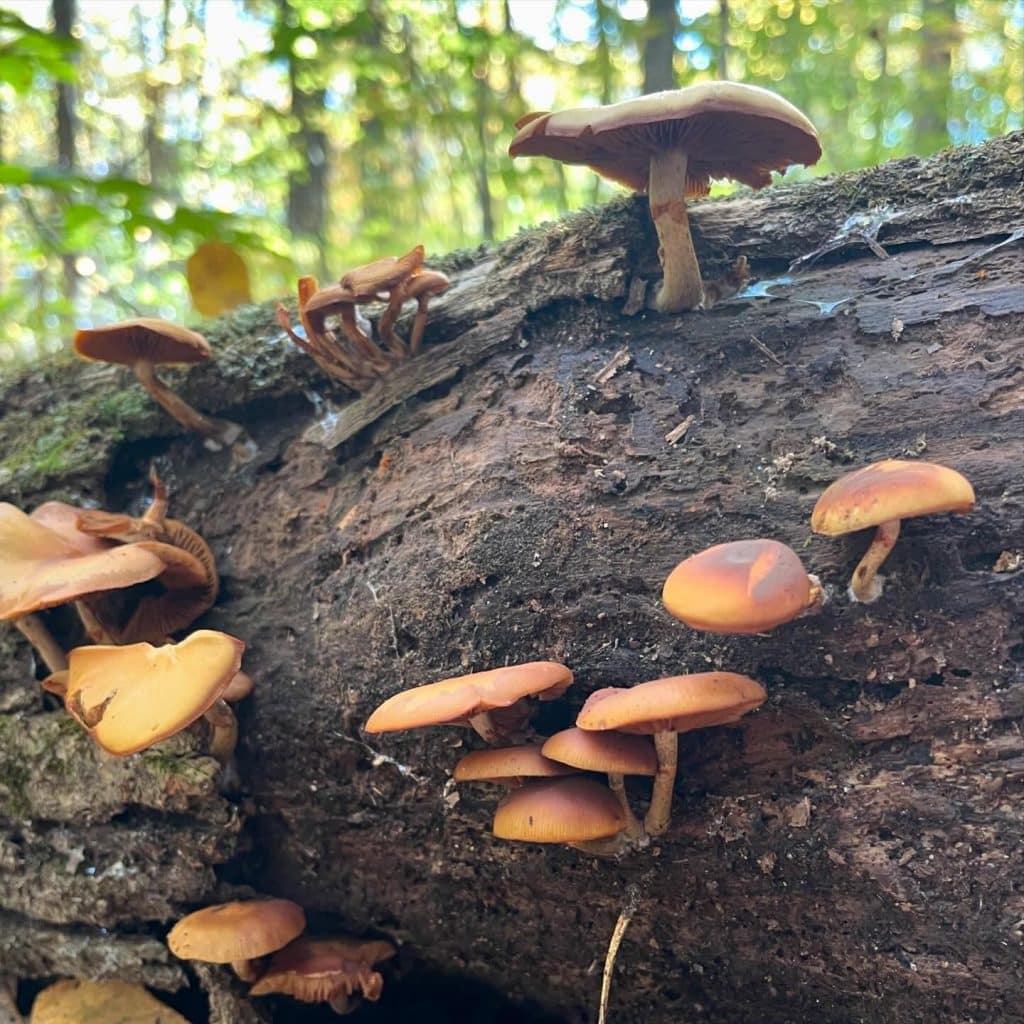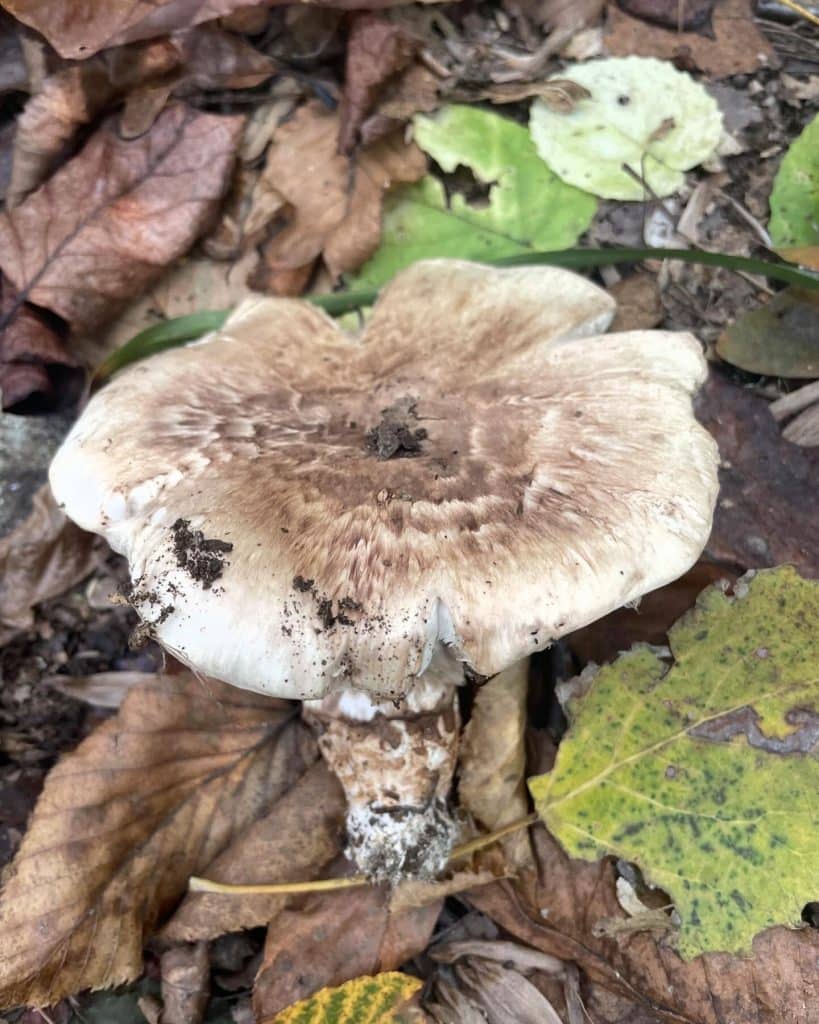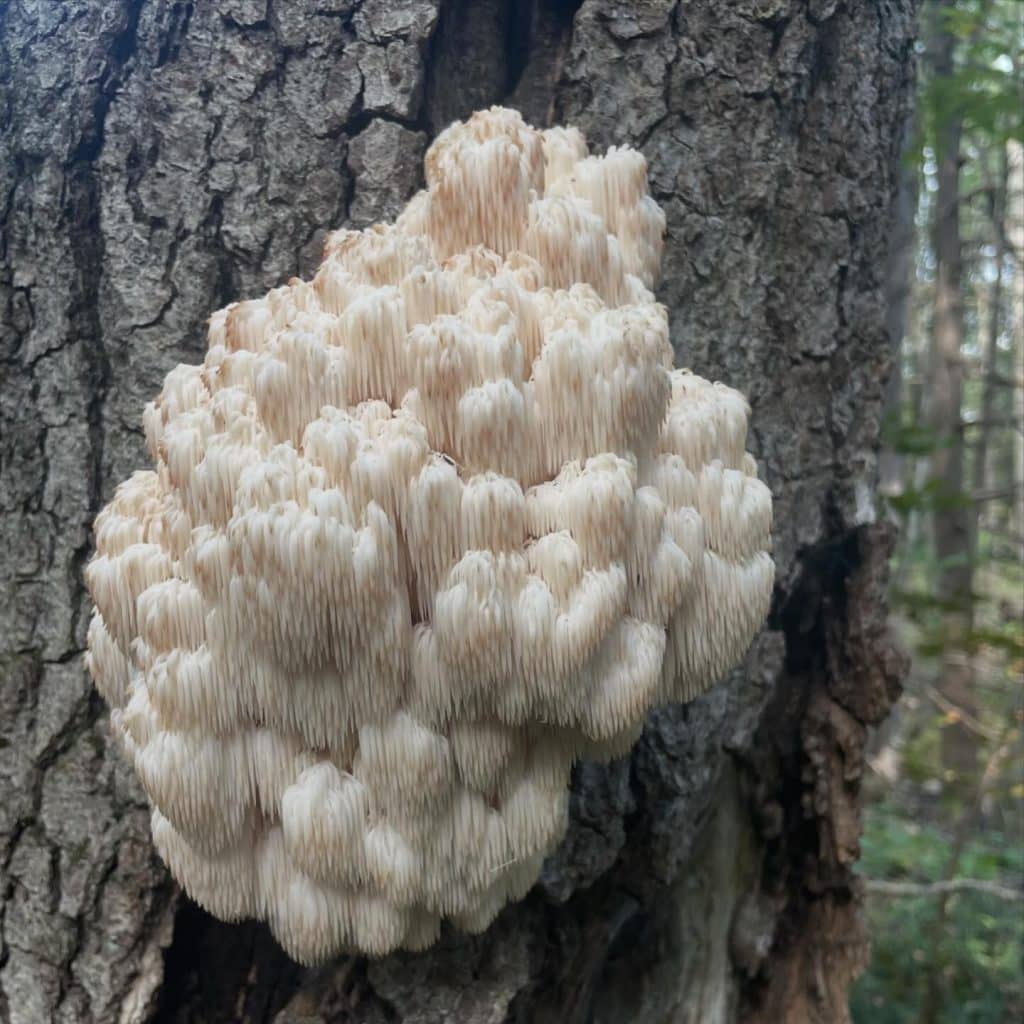Taxus canadensis – Canada Yew

Canada yew (Taxus canadensis) is a native species of yew that can be found growing wild in CT in forested areas. The plant is nearly all toxic. Yew has pointed needle-like leaves that grow in two lateral rows along the branch. The plant produces red arils (berry-like seed coverings) in late summer. The berries can […]
Grateloupia turuturu – Devil’s Tongue Weed

Devil’s tongue weed (Grateloupia turuturu) is an edible seaweed that is native to East Asia. This red alga has become invasive in the northeast United States, out competing native seaweed species. Devil’s tongue is a perennial, living 6-10 years. It can be found along rocky coastal areas and shallow shores. The seaweed can be picked […]
Codium fragile – Dead Man’s Fingers

Dead Man’s Fingers (Codium fragile) is an edible and invasive species of seaweed that originated in Japan. Dead man’s fingers can be found along the coastline during low tide. Seaweed can be harvested year-round. The plant is named for its finger-like fronds that hang from rocks. Dead man’s fingers can be a nuisance to […]
Rhodotypos scandens – Black jetbead

Black jetbead (Rhodotypos scandens) is an invasive plant in the rose family that is highly toxic. Black jetbead is native to Asia and was introduced to the United States as an ornamental. It can be found in forests and along roadsides. Black jetbead produces white flowers in the spring. In the fall, the plant produces […]
Ginkgo biloba – Ginkgo

Ginkgo (Ginkgo biloba) is a unique tree that is native to a province in China. Ginkgo is the only plant in its genus, family, order, class, and division to still exist today. Ginkgo is often planted in suburban and urban areas. It can tolerate air and soil pollution and high levels of road salt. There […]
Diospyros virginiana – American Persimmon

American Persimmon (Diospyros virginiana) is a native plant that can be found in central and eastern United States. Southern Connecticut is the northern range for persimmons. It can be found growing along field edges. It prefers full sun, but can tolerate partial shade. Persimmon trees have dark gray and furrowed bark. The oval leaves are […]
Viburnum dilatatum – Linden viburnum

Linden Viburnum (Viburnum dilatatum) is a deciduous shrub that is native to Asia. It can be found in open forests, forest margins, and shrubby areas. The plant is named for the fact that its leaves resemble linden leaves. The plant produces creamy white flowers that grow in clusters from May-June. Red fruits mature late summer-early […]
Setaria faberi – Giant millet

Giant Millet (Setaria faberi) is an introduced plant from Asia that can be used as a grain. It is an annual that sets seed late summer- fall. Giant millet is a common weed of corn fields. It prefers full sun and compact soil that is high in nitrogen. Giant millet, also known as “Chinese foxtail”, […]
Galerina marginata – Deadly Galerina

The Deadly Galerina (Galerina marginata) is the deadly toxic look-alike to edible honey mushrooms (Armillaria spp.) and enoki (Flammulina velutipes). The deadly galerina grows scattered or in small clusters on hardwood or conifer logs. It generally fruits June-October. The cap is orange-brown to dark brown and sticky. Gills are yellow, becoming rusty-brown with age. The […]
Chlorociboria spp. – Green Elf Cup

Green elf cup (Chlorociboria spp.) is a small blue-green mushroom that stains wood blue. It can be found from June-November on hardwood logs. It prefers oak wood that is devoid of bark. The green elf cup has small cup-shaped fruiting bodies that are attached to the wood by a stem. The mushrooms are […]
Laetiporus sulphureus – Chicken of the Woods

Chicken of the woods (Laetiporus sulphureus) is an edible mushroom that has a flavor and texture that is similar to chicken. Laetiporus sulphureus can be found growing on living or dead hardwood trees from May-November. It has bright orange caps with yellow edges. Pores and flesh are both yellow. Spore print is white. Chicken of […]
Tricholoma “caligatum” complex – False Matsutake

False matsutake (Tricholoma “caligatum” complex) is a group of Tricholoma species that closely resemble the choice edible American matsutake (Tricholoma magnivelare). False matsutake can be found July-October in the northeast. It grows in association with hardwood trees, particularly oaks. False matsutake has a white cap with flat brownish scales. The stem is smooth and white […]
Physalis spp. – Ground cherry

Ground cherry (Physalis spp.) is a native perennial in the nightshade family that produces edible berries in late summer-fall. It can be found in sunny fields or disturbed ground with sandy soil. There are about 30 species of ground cherry that grow in the United States. Ground cherry has toothed, wavy, or smooth leaves. Flowers […]
Solanum nigrum complex – Black nightshade

Black nightshade (Solanum nigrum complex) is an edible member of the nightshade family. It is an annual or occasionally a perennial that grows throughout the United States. It can be found in gardens, fields, and disturbed areas. Black nightshade leaves are alternate and can be smooth or slightly toothed. In the summer, the plant produces […]
Hericium americanum – Bear’s Head Tooth

Bear’s head tooth (Hericium americanum) is an edible and medicinal mushroom that is closely related to lion’s mane (Hericium erinceus). It fruits from late August to early November. Bear’s head tooth can be found as a parasite or saprobe on hardwood trees, especially beech, oak, and maple. It is often found in damaged parts of […]
Malva neglecta – Common Mallow

Common Mallow (Malva neglecta) is a non-native plant that is edible from root to tip. It can be found in disturbed areas that receive sun. Mallow leaves are ruffled and hairy. Flowers are lavender-colored and have five petals. The fruits look like miniature, flattened wheels of cheese. Mallow leaves, fruits, flowers, and taproots are edible. […]
Apioperdon pyriforme – Pear-shaped Puffball

The Pear-shaped puffball (Apioperdon pyriforme) is an edible mushroom that can be found as a decomposer of both coniferous and deciduous trees. It often fruits in large, dense clusters. The pear-shaped puffball can be either pear shaped or spherical. The color ranges from cream to yellowish-brown. This inside is white and marshmallow-like at first, becoming […]
Galinsoga quadriradiata – Common Quickweed

Common quickweed (Galinsoga quadriradiata) is an edible annual that is native to Central America. The plant is named for its quick growth habit. A single plant can produce 7,000 seeds and the plant can go through several generations per year. Due to the invasive growth habit of this non-native plant, it should not be cultivated […]
Echinacea purpurea – Purple Coneflower

Purple coneflower (Echinacea purpurea) is a native plant with edible and medicinal uses. It can be found in meadows and open woodlands with partial to full sun. The plant can be easily identified by its daisy-like flowers with purple petals. Leaves are narrow and toothed. When mature, the plant can reach up to 2 feet […]
Rubus spp. – Dewberries

Dewberries (Rubus spp.) are a native relative of blackberries. They can be found along the side of trails in central and eastern North America. Dewberries stay low to the ground, whereas blackberries have upright canes. Leaves are alternate and compound, usually in groups of three or five. The fruits form a compact aggregate berry, unlike […]
